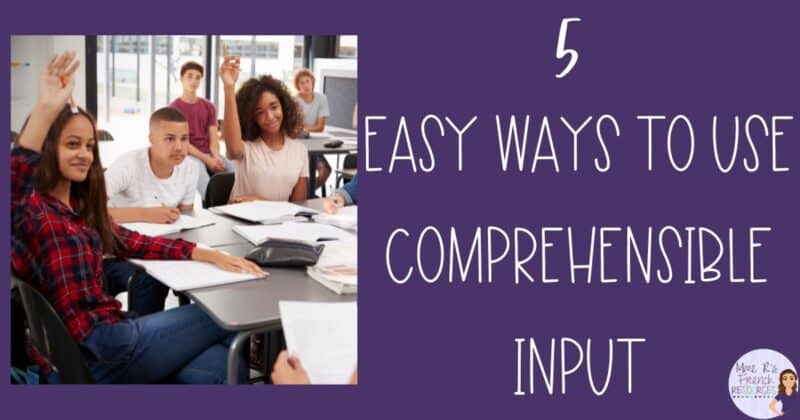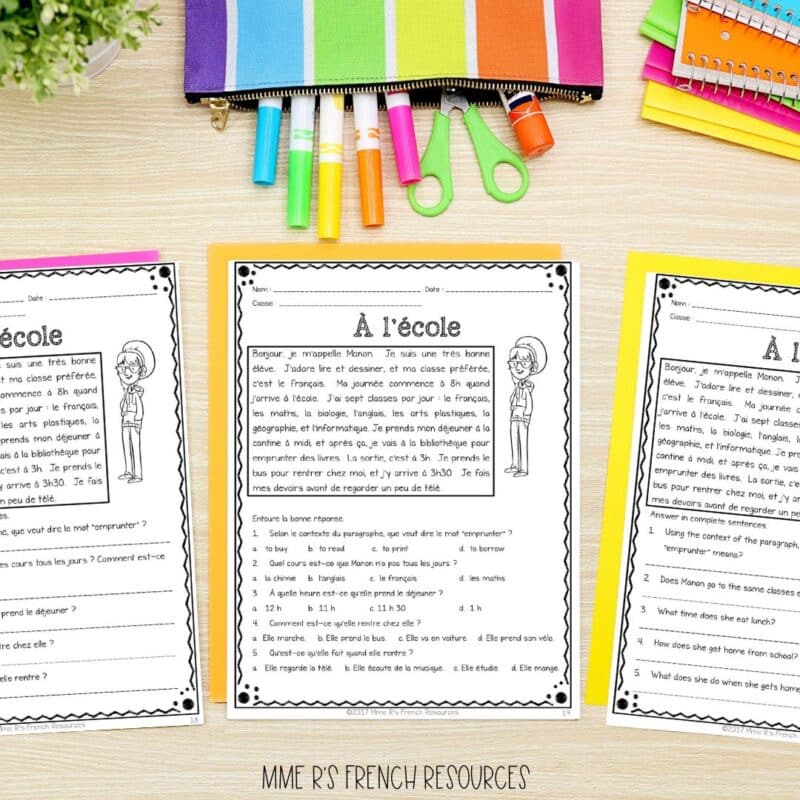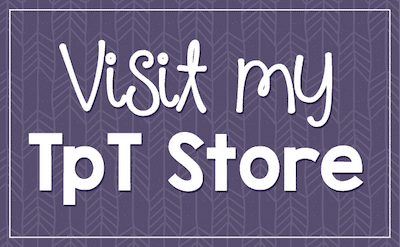
One of the biggest challenges for language teachers is to get their students speaking and understanding the language, particularly in the early stages. While there are various methods for teaching a new language, the use of comprehensible input has been found to be particularly effective.
What is comprehensible input?
Comprehensible input is any language that can be understood by the learner, even if there are some words they don’t know. It’s a great way to expose students to language outside of a formal vocabulary set they may be studying! Read on to find out how you can effectively use comprehensible input to help your students master French.
Keep it Simple
When teaching French to beginners, it is essential to keep the vocabulary and grammar simple so that students can understand. Use familiar words and phrases, repeat them often, and use gestures or pictures to add meaning so that students can understand the message even if they don’t know every word.
Use stories or simple french reading activities.
Stories are a fantastic way to make use of comprehensible input in your French classes. Start by telling simple stories that use easy vocabulary and grammar. Introduce new words and phrases gradually, building on the students’ existing knowledge of the language. Use props and visual aids such as pictures, photos, and videos to reinforce the story and make it more memorable.
Using French reading comprehension activities that are designed just for their level can also be so helpful in building their confidence! These activities have differentiated questions, so you can test basic comprehension with the English questions, challenge them a little more with the French multiple choice questions, or make it even more challenging with the French short answer questions!

Make it Relevant and Fun
When teaching French, don’t just focus on the language itself; make it relevant and enjoyable for your students. Use topics that interest your students such as travel, sports, or music, and incorporate those topics into your teaching. Using games, music, and other fun activities are sure to engage your students and make learning French a lot of fun!
They will probably not remember (or care too much) about all the verbs they’ll learn to conjugate! They will remember the interactive activities they do to help them actually communicate!
Encourage Active Listening
Comprehensible input is most effective when students actively listen to the language and try to understand the message. Encourage your students to ask questions and clarify any words or phrases they don’t understand. Ask them to repeat what they have heard or seen in their own words.
You can also make this into a fun drawing activity! I love to do this with beginners, because they don’t always have the French skills to say much just yet. I want to know what they understood, so using English is okay. However, I really like to use as much French as possible, so I might tell them a story and ask them to illustrate a few key points they got from it.
Create a Supportive Learning Environment
Creating a supportive learning environment is essential for effective use of comprehensible input in your French classes. Encourage your students to speak French as much as possible, even if they make mistakes. Provide positive feedback, and focus on their efforts rather than their errors.
Remember, we all were able to communicate in our first language way before we learned grammar! The goal is communication, so make sure they know you aren’t looking for perfection.
Comprehensible input is a powerful tool for teaching French to students of all ages and abilities. By using simple vocabulary and grammar, storytelling, relevance, fun, active listening, and a supportive learning environment, you can help your students understand and master the language.
Encourage your students to be resilient, practice regularly, and to not be afraid to make mistakes!
Best of luck in your journey to teaching with comprehensible input!


Leave a Reply